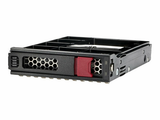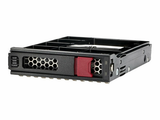Advantages of DDR4 VS. DDR3 and Other Generation Modules
First and foremost, what is DDR4? DDR4 or also known as Double Data Rate Fourth Generation is designed to be a better, faster, more reliable memory standard than previous generation modules. DDR4 is designed to replace DDR3 memory.
The double data rate can read data on the rising and falling edge of the clock signal-- this is also called double-pumped, dual-pumped, and double transition.
DDR3 Memory: The RAM Generation of Yesterday
The DDR3 memory was released in 2007 and it has a clock speed of 400 MHz up to 1066 MHz. Its size can range from 1 to 24 GB. DDR3 is designed to use up nearly 30% less power than its predecessors.
Physically, DDR3 RAM sticks designed for desktop computers have 240 pins while ones for laptops have 204 pins. This type of double data rate memory chip can only be installed on a motherboard that can support it. It is not compatible with DDR2 memory slots.
DDR4 Memory: The New Generation
As mentioned previously, DDR4 is designed to replace DDR3. It has increased speed and efficiency for computing devices. It was released in the market in 2014.
Key Differences of DDR4 Compared to DDR3 Memory
To be quite honest, a DDR4 module looks similar to a DDR3 memory DIMM (dual in-line memory module). However, DDR4 for desktop computers has 288 pins compared to DDR3's 240, while its laptop module has 260 compared to DDR3's 206.
The DDR4 key notched is placed differently compared to the DDR3 version. It also has a slightly curved V edge connector. This design is meant to reduce insertion force compared to the older generations like DDR3 memory.
DDR4 Advantages Over DDR3 Memory
The main advantage of DDR4 compared to DDR3 is that it has higher module density and lower voltage requirements. Users can also enjoy higher data rate transfer speeds. But what else is there?
DDR4 offers lower power consumption.
DDR4 modules can operate at 1.2V only. This is significantly lower than the 1.5V or 1.35V of DDR3 memory modules. It means that users can save up on both power and electricity bills while still enjoying operations at higher speeds. Companies can greatly benefit from upgrading to DDR4.
DDR4 has a higher module density.
DIMM densities start at 2 GB and go up to 128 GB, which is a significant improvement over DDR3's 512 MB to 32 GB capabilities.
DDR4 offers a faster data transfer speed.
DDR4 can be used for industrial applications since it delivers high-speed data transfers up to 3200 MT/s. This speed is 70% faster than DDR3 memory versions. It is a big boost that can benefit businesses especially ones dealing with heavy data load.
Frequently Asked Questions About DDR4
DDR4 does sound like a great upgrade from its predecessor, DDR3 memory. However, will your company benefit from it? Is it better for home use? Here are answers to some of the frequently asked questions:
Which industries will best benefit from using DDR4?
Of course, DDR4 would be a great upgrade for any company. However, do you need it? Although it is something great to have, it may be an unnecessary cause for some since they can still efficiently operate while on the older version.
The increased speed and efficiency are great for companies and industries dealing with critical computing applications. Industries like telecommunication infrastructures, networking storage systems, network-attached storage (NAS) servers, micro/cloud servers, etc. will benefit most from upgrading to DDR4.
How can you check if your system supports DDR4?
Much like how DDR3 memory modules are not backward-compatible with DDR2, DDR4 is also not backward-compatible with DDR3. Simply put, a DDR4 DIMM will not fit on a DDR3 slot.
Conclusion
There are different types of DDR and DIMM and each one of them serves several purposes. DDR4 can significantly improve the efficiency and speed of your systems, but you need to confirm if you need the upgrade and if your units are compatible with the change.
As mentioned previously, DDR4 is not backward-compatible with DDR3 memory slots. If your company is still at maximum efficiency, you may not need to get an upgrade at all. Keep in mind that if you are at an older type of DDR, you need to upgrade more than just your memory device. You need to check if your hardware (especially your motherboard) supports the type of upgrade you want for your system.
Recent Posts
-
Solid Confidence in Every Byte: Powering ProLiant Gen10 and Gen10 Plus Servers with the HPE 960GB LFF Value SAS SSD
HPE 960GB 3.5-inch LFF Digitally Signed Firmware SAS-12Gbps Mixed Use Value SAS Multi Vendor SSD for …Dec 13th 2025 -
Where Reliability Meets Everyday Speed: Empowering ProLiant Gen9 and Gen10 Servers with the HPE 960GB LFF SATA Mixed Use SSD
HPE 960GB 3.5-inch LFF Digitally Signed Firmware SATA-6Gbps Mixed Use SSD for ProLiant Gen9 and Gen1 …Dec 12th 2025 -
The Titanium Heart of Your Datacenter: Unleashing Power with the HPE 960GB LFF Digitally Signed Firmware SAS Enterprise SSD
Powering Enterprise Reliability with the HPE 960GB 3.5-Inch LFF Digitally Signed Firmware TLC SAS-12 …Dec 10th 2025




